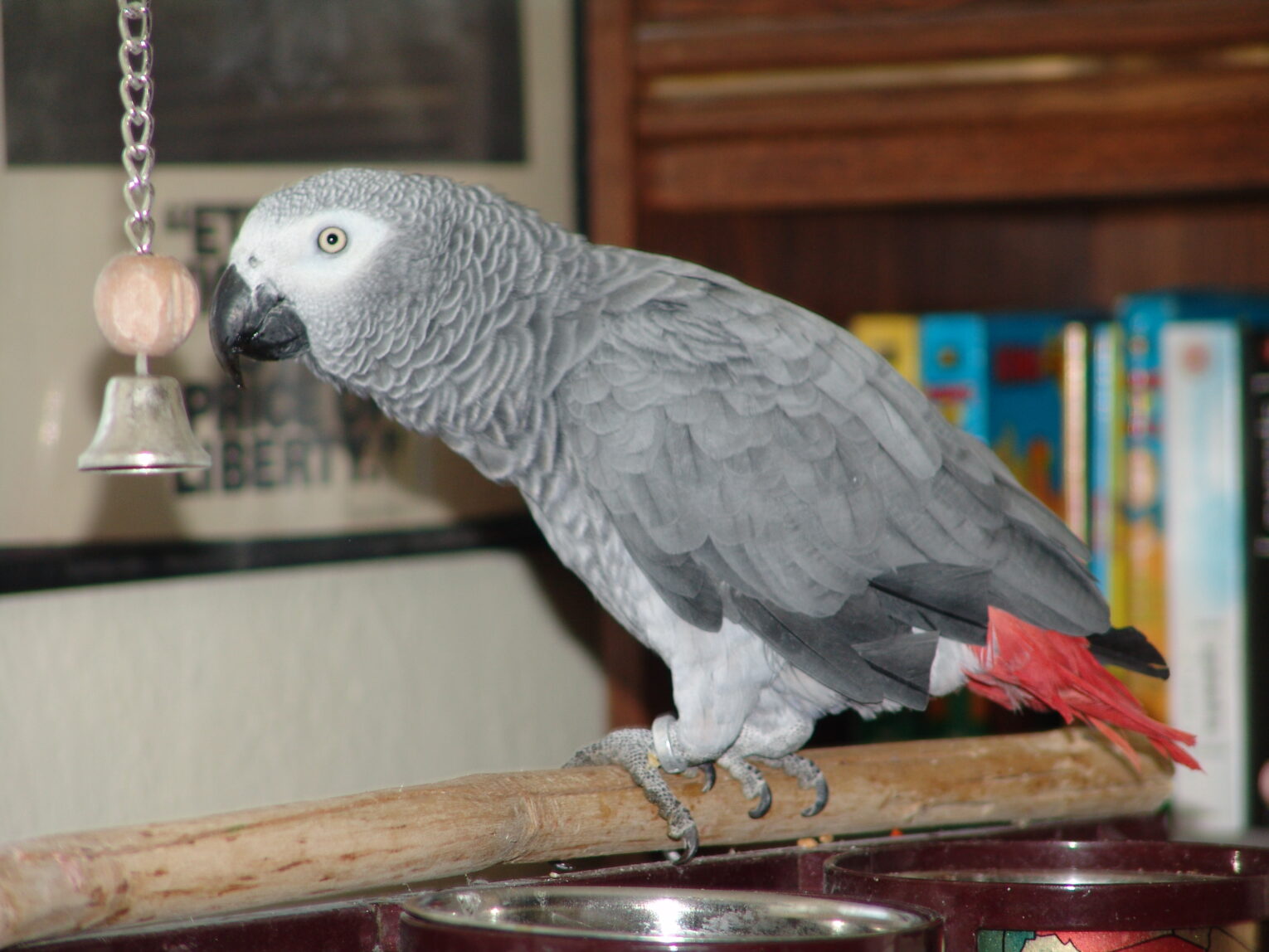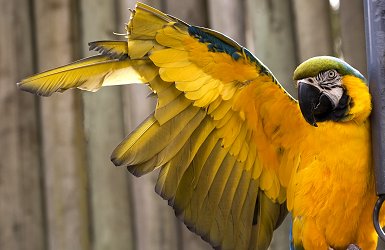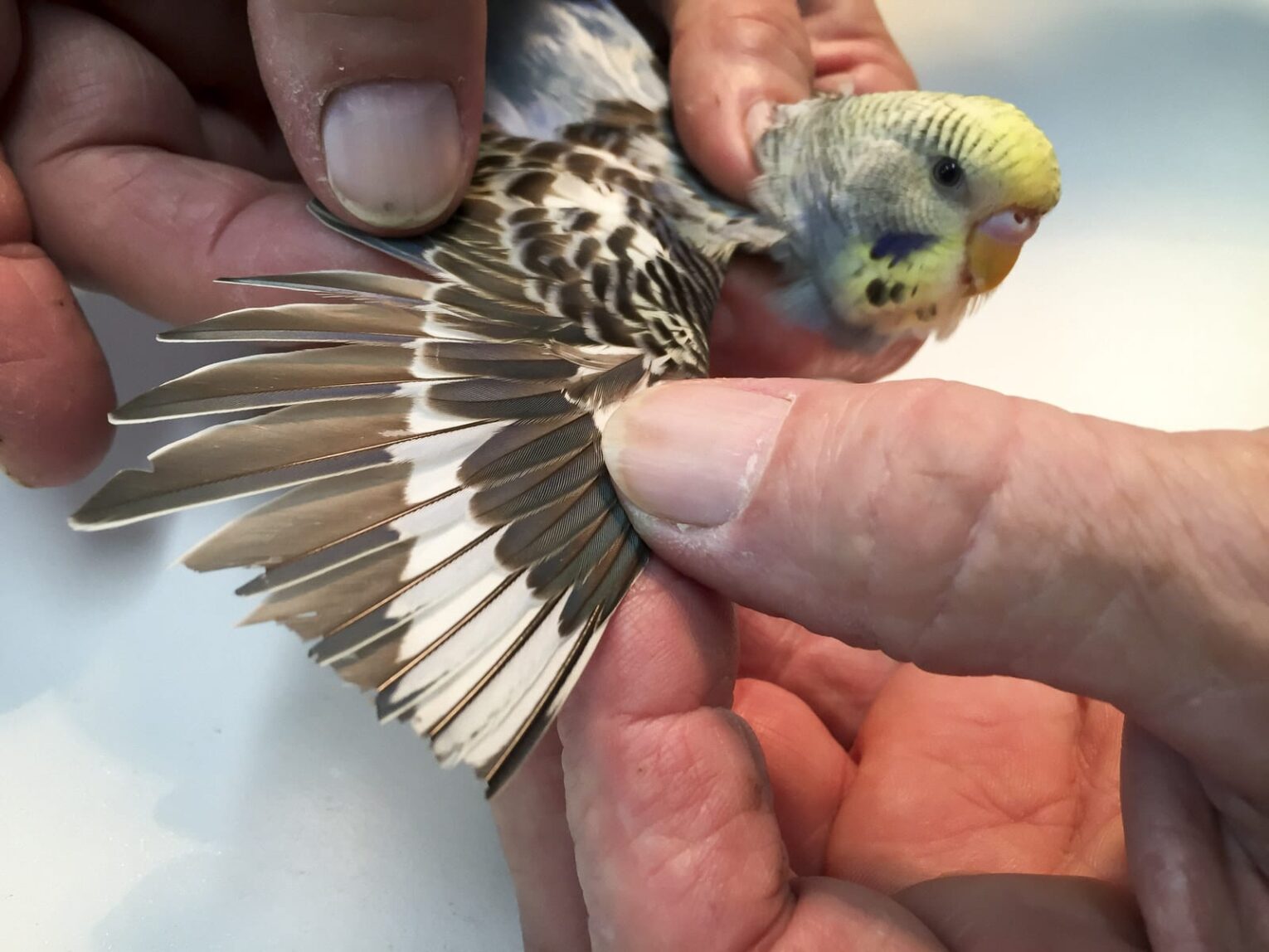
Wing-clipping, a topic often surrounded by debate and evolving opinions, is a practice that has been part of avian care for many years. In this introduction, we aim to define what wing-clipping is, delve into its historical context, and outline what this blog will explore regarding this complex and often contentious subject.
Definition and Purpose
Wing-clipping refers to the trimming of a bird’s primary flight feathers, which are the long feathers at the tip of the wing. This practice is done to limit a bird’s ability to fly. The primary purpose of wing-clipping is to prevent birds, especially pet birds like parrots, from flying away or into potential hazards within the home. It’s intended to be a safety measure, reducing the risk of injury from flying into windows, mirrors, or other household dangers, and preventing escape.
Historical Context and Evolving Opinions
Historically, wing-clipping has been a common practice among bird owners, largely accepted as a standard part of avian care. It was seen as a necessary step to ensure the safety of pet birds in a domestic setting. Over time, however, opinions on wing-clipping have evolved. There’s been a growing emphasis on animal welfare and natural living conditions, leading to a more critical view of this practice. Many bird experts, veterinarians, and avian enthusiasts now advocate for alternative methods to ensure a bird’s safety while preserving its ability to fly.
The debate around wing-clipping encompasses various factors, including the bird’s physical health, psychological well-being, and the nature of its environment. The modern perspective often considers whether clipping a bird’s wings is in the best interest of the bird or simply a matter of convenience for the owner.
Overview of the Blog
In this blog, we will explore the various dimensions of wing-clipping, including:
- Pros and Cons: Examining the benefits and drawbacks from a health and welfare perspective.
- Ethical Considerations: Discussing the ethical implications and how they align with modern views on animal welfare.
- Alternatives to Wing-Clipping: Presenting other ways to keep birds safe without limiting their ability to fly.
- Expert Opinions and Research: Sharing insights from avian veterinarians and recent studies on the impact of wing-clipping.

Arguments in Favor of Wing-Clipping
Wing-clipping, a practice that has been part of bird care for decades, has its proponents who argue in favor of it primarily for safety and practical reasons. In this section, we will discuss the arguments supporting wing-clipping, focusing on safety considerations, ease of handling and training, and insights from veterinarians and bird trainers.
Safety Considerations
Preventing Escape: One of the primary arguments for wing-clipping is to prevent pet birds from escaping. An open window or door can pose a risk for a flighted bird, potentially leading to loss or injury.
Reducing Indoor Injuries: In a domestic environment, there are numerous hazards for a flying bird, such as fans, windows, mirrors, and hot cooking surfaces. Wing-clipping is seen as a measure to reduce the risk of these types of injuries.
Easier Handling and Training
Easier Handling: Clipped birds are often easier to handle, especially for new bird owners who are still learning about avian care. It can make day-to-day activities like vet visits and grooming less stressful for both the bird and the owner.
Facilitates Training: Some argue that wing-clipping can make training easier, as it limits the bird’s ability to fly away, thereby keeping it more focused during training sessions.
Perspectives from Veterinarians and Bird Trainers
Veterinarian Recommendations: Some avian veterinarians recommend wing-clipping, especially for birds in homes with open layouts or multiple potential escape routes. They often emphasize that the clipping should be done correctly to avoid causing harm to the bird.
Trainer Insights: Certain bird trainers advocate for temporary wing-clipping during the initial training and bonding period, arguing that it helps in establishing a connection and trust between the bird and its owner.
Arguments Against Wing-Clipping
While wing-clipping is a traditional practice in avian care, it faces growing opposition based on ethical, physical, and psychological considerations. Opponents argue that it impinges on a bird’s natural behavior and well-being. This section explores these arguments against wing-clipping, discussing the impacts on birds and highlighting effective alternatives.
Ethical Concerns
Impact on Natural Behavior: Birds are inherently designed to fly, and this ability is integral to their natural behavior and way of life. Critics of wing-clipping argue that depriving birds of flight is unethical and goes against their nature.
Wellbeing and Quality of Life: There is a growing belief that allowing birds to fly contributes to their overall wellbeing and happiness. Flight enables birds to exercise, explore, and engage with their environment in a way that is instinctual to them.
Physical and Psychological Effects
Physical Health Risks: Improper wing-clipping can lead to physical injuries, such as falls leading to broken bones or feather damage. There is also concern about the impact on a bird’s physical development, especially in young birds.
Psychological Impact: Being unable to fly can cause stress and frustration in birds. It may lead to psychological issues such as feather plucking, aggression, or depression. The ability to fly is also linked to a bird’s sense of security, as flight is their primary means of escape from perceived threats.
Alternatives to Wing-Clipping
Environmental Enrichment: Creating a safe and stimulating indoor environment can minimize the need for wing-clipping. This includes bird-proofing the home and providing ample space for flight.
Training: Training birds to respond to commands and to understand boundaries can reduce the risk of escape or injury. Recall training, in particular, is seen as a crucial skill for flighted birds in a home setting.
Harness Training: For outdoor adventures, a well-fitted harness can allow a bird to experience the outdoors safely without the risk of flying away.
Aviaries and Flight Cages: Providing a large aviary or flight cage gives birds the opportunity to fly in a controlled and safe environment.
Understanding the Wing-Clipping Process
Wing-clipping, when chosen as a method to limit a bird’s flight, is a delicate procedure that requires understanding and care. It’s crucial to know how it’s performed, the different techniques involved, and the frequency of clipping to ensure the safety and well-being of the bird. This section provides a detailed explanation of the wing-clipping process, the variations in techniques, and indicators of when re-clipping may be necessary.
How Wing-Clipping is Performed
Feathers Targeted: Wing-clipping involves trimming the primary flight feathers, which are the long feathers at the end of the wing. These feathers are crucial for flight.
Procedure: The clipping is usually done using sharp scissors or specialized bird grooming shears. Only the tips of the primary feathers are cut, avoiding the secondary feathers and coverts.
Avoiding Pain: The feathers that are clipped do not have a blood supply in their tips, so if done correctly, the process does not cause pain to the bird. However, cutting too close to the base where the blood supply exists can cause injury and bleeding.
Differences in Techniques
Partial Clipping: This method involves clipping only a few of the primary feathers. It allows the bird some ability to glide downwards, preventing a hard fall.
Full Clipping: All the primary flight feathers are trimmed. This method restricts flight more significantly but increases the risk of injury from falling.
One-Wing vs. Both-Wings Clipping: Some owners clip feathers on one wing only, which can cause an imbalance and is generally not recommended. Both wings should be clipped to maintain balance.
Frequency of Clipping and Signs of Regrowth
Frequency: The frequency of wing-clipping depends on the bird’s rate of feather growth and molt cycle. Typically, birds may need to be clipped once every few months.
Regrowth Signs: New feather growth is usually noticeable as the clipped feathers are replaced during the bird’s natural molting cycle. New feathers will appear uncut and will be noticeably different from the clipped ones.
Monitoring: Regularly check the bird’s wings for regrowth, especially if the bird is starting to regain more flight ability than desired. It’s important to clip the new feathers as they grow in if you wish to continue limiting the bird’s flight.

Care and Management of Clipped Birds
Choosing to clip a bird’s wings necessitates additional considerations in their care and environment management. Adjusting living spaces, vigilant monitoring for health issues, and attending to behavioral changes are integral to ensuring a healthy and fulfilling life for a clipped bird. This guide provides insights into effectively caring for and managing the wellbeing of birds with clipped wings.
Adjusting the Living Environment
Safe Enclosure: Ensure the bird’s cage or enclosure is safe and secure. A clipped bird may still attempt to fly and could fall; thus, padding around the cage and minimizing hazards is crucial.
Cage Placement: Place the cage in a location where the bird can observe daily activities and interact with family members. Avoid high perches to reduce the risk of injury from falls.
Accessibility: Arrange food, water, and perches at accessible levels. Clipped birds may have difficulty reaching high or distant perches.
Monitoring for Health Issues Related to Clipping
Feather Condition: Regularly inspect the condition of the feathers, especially during molting. Improper clipping or regrowth can sometimes lead to feather damage or stress.
Skin and Feather Follicles: Look out for any signs of irritation or infection in the skin where the feathers have been clipped.
Behavioral Observation: Observe the bird for signs of discomfort or distress, which may indicate a problem with the clipping or overall health.
Behavioral Changes and Enrichment Activities
Mental Stimulation: Clipped birds require mental stimulation to compensate for the reduced physical activity. Provide toys, puzzles, and foraging activities to keep them engaged.
Social Interaction: Spend quality time interacting with your bird daily. Clipped birds may depend more on their human companions for social interaction.
Training and Bonding: Engage in gentle training sessions using positive reinforcement. This can strengthen your bond and provide mental enrichment.
Monitoring Mood and Behavior: Be attentive to changes in mood or behavior, such as increased vocalization, aggression, or withdrawal, as these can be signs of frustration or boredom.
Exercise: Encourage physical activity through play and exercise outside the cage in a safe, controlled environment.
Making an Informed Decision
Deciding whether to clip your bird’s wings is a significant choice that impacts both their lifestyle and wellbeing. This decision should not be taken lightly and requires careful consideration of various factors. Understanding the implications of wing-clipping, consulting with avian experts, and learning from the experiences of other bird owners are all crucial steps in making an informed decision.
Factors to Consider
Bird’s Species and Behavior: Some species are more adept at flying and may struggle more with clipped wings. Additionally, consider your bird’s individual personality and behavior – how important is flight to their daily activities and happiness?
Safety and Environment: Assess the safety of your living environment. Can you bird-proof your home to mitigate risks, or do potential hazards make wing-clipping a safer option?
Time and Commitment: Consider the time you can dedicate to training and bird-proofing your home. Birds with flight abilities require more supervision and interaction to keep them safe and engaged.
Health Implications: Understand the potential physical and psychological impacts of wing-clipping. Improper clipping can lead to physical harm, while the inability to fly can affect a bird’s mental health.
Consulting with Avian Experts
Veterinarian’s Input: Speak with an avian veterinarian to understand the health implications of wing-clipping for your specific bird.
Trainer’s Advice: Avian trainers can provide insights into how wing-clipping might affect behavior and training, offering a perspective on managing a bird’s wellbeing whether clipped or fully flighted.
Learning from Personal Anecdotes and Experiences
Bird Owners’ Stories: Engage with bird owners’ communities, forums, or social media groups. Hearing personal stories and experiences can provide real-world insights into the pros and cons of wing-clipping.
Success and Regret Stories: Pay attention to stories of both successful experiences and regrets. They can offer a balanced view of the long-term implications of wing-clipping.
Alternatives Tried: Learn about alternative methods that other bird owners have used, such as harness training or bird-proofing their homes, and assess if these could be viable options for you.
Conclusion
The decision to clip your bird’s wings is personal and should be based on a comprehensive understanding of your bird’s needs, your ability to provide a safe environment, and the potential impact on their physical and mental health. Consulting experts and learning from the experiences of other bird owners are invaluable in this process. Whatever your decision, it should be made with the best interest of your feathered companion in mind, ensuring their safety, health, and happiness are prioritized.
FAQs
FAQs on Making an Informed Decision about Wing-Clipping
1. Is wing-clipping necessary for all pet birds?- No, wing-clipping is not necessary for all pet birds. It depends on various factors, including the bird’s species, behavior, your living environment, and your ability to provide a safe and enriching space for a flighted bird.
- If done correctly, wing-clipping does not cause physical pain to the bird as it involves trimming the flight feathers without blood supply. However, improper clipping can lead to physical harm and psychological distress.
- Yes, clipped feathers can grow back during the bird’s natural molting cycle. The duration for complete regrowth varies among species and individual birds.
- Consider factors like the safety of your home environment, your bird’s species and personality, and your ability to invest time in training and supervision. Consulting with an avian veterinarian or a bird behaviorist can also help in making an informed decision.
- Wing-clipping can impact a bird’s behavior, as flight is a natural and instinctual activity. Some birds may become less active or show changes in behavior. It’s important to provide other forms of stimulation and exercise for a clipped bird.
- The extent of flight ability after clipping depends on how the clipping is done. Some birds may still be able to glide or make short flights, while others may not be able to fly at all.
- Alternatives include bird-proofing your home to remove hazards, using bird harnesses for safe outdoor time, and training your bird for better control and safety.
- If you’re inexperienced, it’s advisable to seek professional help from an avian veterinarian or an experienced bird groomer to avoid accidental injury.
- The frequency depends on how quickly your bird’s feathers grow back, which can be influenced by their molt cycle. Regularly check the wing feathers for regrowth.
